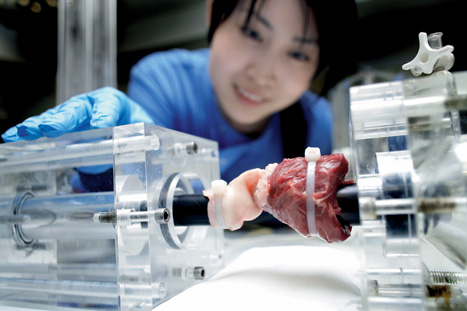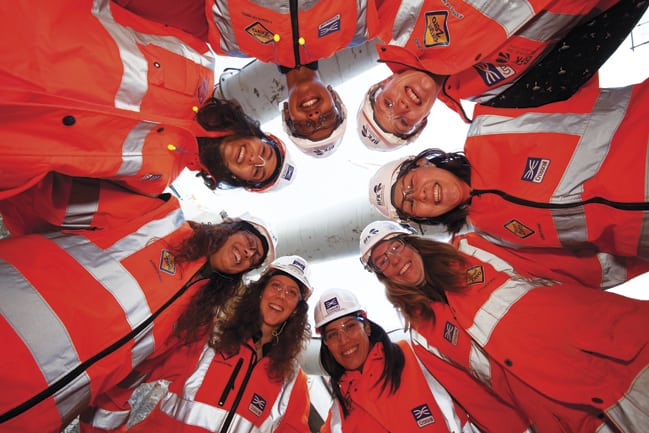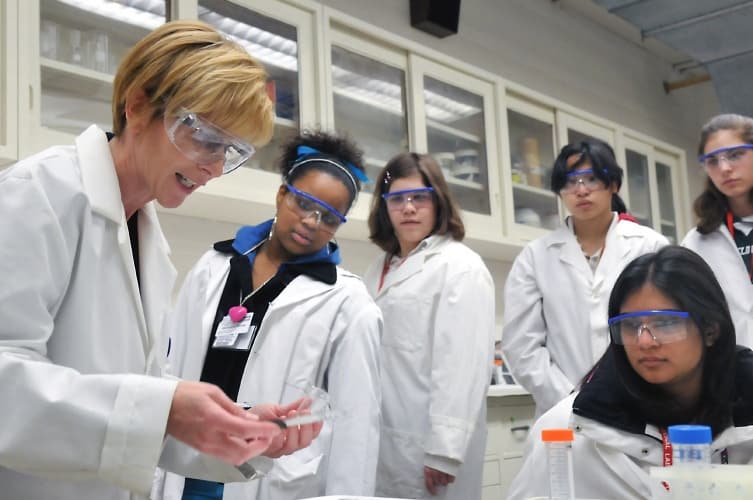 Viewpoint
Viewpoint
Helen Jackson, senior consultant for Ove Arup and Partners Limited, reflects on some of the hurdles she's faced in her engineering career, and what can be done to remove them for the next generation.
Whenever I see the statistics about the proportion of women in UK engineering I am no longer astonished; I am resigned to a gender imbalance in engineering, even in these modern and otherwise diverse times. Only 8 per cent of professional UK engineers are women, and the figures for current engineering first-degree courses show that the proportion of women is only around 14 per cent. In 2013/14, nearly 9,000 young women opted for level 2 apprenticeships at post 16 in hairdressing, while only 80 opted for an engineering apprenticeship at the same level. It seems that whatever factors limit the number of women going into engineering in the UK, they are still in full play.
Let’s not underestimate the issue here. These numbers are disturbingly low, the worst in Europe, and an indictment of how engineering is sold to the younger generation. We commonly think that in this country we are world leaders in diversity, but somehow every other European nation is doing better than the UK in removing the hidden obstacles to women having a career in engineering.

It is hard to conceive how this could be the case but, when I start considering my own history, I realise that at every turn I have had to fight to remain on course for an engineering career. At each crucial point I have had to resist the pressures and alternative attractions that led my peers to follow different paths.
My starting point for any consideration of the gender split in engineering is that there is absolutely no difference in the innate ability of men or women to be excellent engineers. I was astonished to read that research from King’s College London indicated that some teachers still perpetuate the myth that physics, a subject central to an engineering career, is somehow a subject more suited to ‘boy brains’. How these ideas remain credible today I don’t know, but I hope that one result of International Women in Engineering Day is to show young women that if you have an aptitude for physics and maths there is no reason why you will find it any more difficult than a boy. Showing that there are plenty of women like me, with a successful engineering career, shouldn’t be necessary, but apparently still is.
I went to an all-girls independent school and, to be honest, I had little support from the school when I decided to pursue engineering. In year 8 I took part in a careers planning exercise - engineering wasn’t on the list of options for a girl - but because of my obvious technical abilities coupled with a love of music, I was told that being a piano tuner was my ideal career! This lack of encouragement at school continued and I had to find my own ways of gaining work experience, spending my holidays working with an Indycar team, at the sportscar manufacturer TVR’s Blackpool site and at my local car garage.

The only support from school to my engineering aspirations was the ability to take part in the Engineering Education Scheme (EES), run by the charity EDT, in Year 12. This was supported by my A-Level physics teacher who accepted that whilst we were all being taught medical physics modules to become doctors, there may have been the odd girl interested in engineering. There was only one team of four from my school and it contained the only two girls in the year who, out of a group of 78, were sufficiently resilient to still maintain a drive to pursue engineering at higher education and beyond.
EES was a revelation. Our team was paired with a company in Birmingham’s Jewellery Quarter who were looking to improve efficiency in the heat treatment process gold to save money. We visited the factory, spoke to the workers and had an engaging mentor who explained the mechanics and thermodynamics of the problem. We felt we could really make a difference for this firm, despite being 17 years old, despite being girls.
I am still in touch with my school as it is one of a number of schools Arup supports in EES, which I co-ordinate. When discussing my experiences, teachers now acknowledge that not enough was done to encourage girls with engineering capabilities during my time. They are now changing the approach and the culture with some positive results.

As I have continued my career I have become used to being one of the few females in the room. Sadly, whenever I have undertaken high level presentations, it continues to be remarked on that I have had the task of capturing the attention of male-dominated audiences.
My own view is that encouraging young women into engineering is no different to encouraging anybody into engineering; you need to show them, at an early an age as possible, what engineering involves. Show them role models (male or female) in engineering that they can relate to, and let them undertake realistic commercial projects that give them an understanding of what engineers can achieve. I think it is important that such experiences should take place early in young peoples’ journey towards deciding their careers, ideally in years 6 to 9, so that they get the insight into engineering before they start thinking about their GCSE and ‘A’ level subjects. Programmes like EES at Year 12 are excellent for confirming an engineering aspiration, but may be too late to inspire those who have already closed the door on engineering earlier in their school life, without any real insight.
I am also in sympathy with the IMechE report that emphasises the need to reposition engineering as a people-focused, problem-solving, socially-beneficial discipline, to appeal to a broader range of young people. We tend to be very product focused; “become an engineer and design the next generation of ultra-supercritical generator-based power stations” means little to a young person. “Become an engineer and design the solutions which will help roll back global warming” is much more likely to inspire them. It is commonly suggested that young women are particularly responsive, perhaps more empathetic, to messages that emphasise their potential role in enhancing the public good and global sustainability through engineering.
So, what can engineers and engineering companies learn from my experience? I would give two main pieces of advice. Firstly, engage with young people at school, both boys and girls, as young as possible through schemes like EDT’s Go4SET or any Industrial Cadet accredited programme for Years 6 to 9. Give them the engineering work experience that I found so hard to get. As an engineering community we must recognise that to get more young people into engineering, particularly young women, we need to inspire and mentor them before they have started thinking about possible careers, so they study the subjects that engineering needs.
Secondly, let’s not undersell ourselves by talking about products all the time. OK, the technical stuff excites us, that’s because we’re engineers, but to communicate with young people we need to communicate why the technical stuff helps build a better world. That’s the message that interests them. That’s the message which will bring them, particularly young women, to consider engineering as a career.





Report highlights significant impact of manufacturing on UK economy
Note to Evil Villain/Dave 2020. Thatcher was PM for _11_ years, from 1979 to 1990 so no one under the age of 34 was even born when she left office....